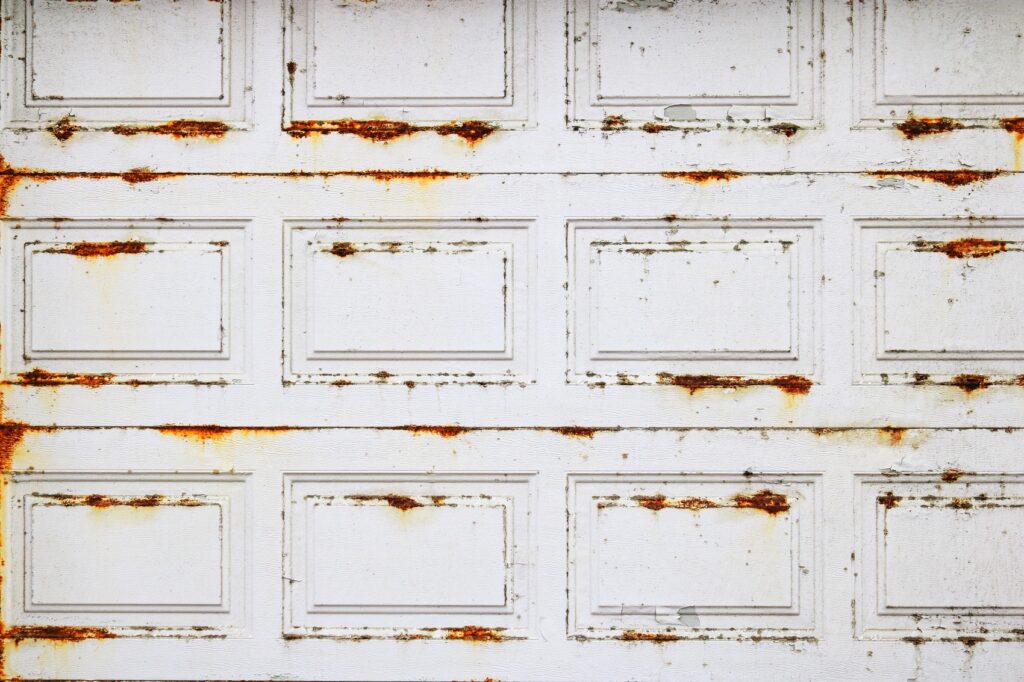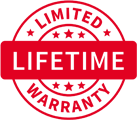Rust is a common enemy of garage doors. It’s unsightly, can compromise the door’s structural integrity, and can lead to costly repairs. But don’t worry, with a little knowledge and a bit of elbow grease, you can effectively combat rust and keep your garage door looking and functioning its best.
Understanding Garage Door Rust
Rust occurs when iron or steel comes into contact with oxygen and moisture. Garage doors, being made of metal, are particularly susceptible to rust. There are lots of factors that can contribute to rust but two of the most common causes are environmental in weather and exposure to salt. Rain, snow and humidity can all play a part while salt – either from the sea or road salt – can rapidly accelerate corrosion.
Scratches and dents can also remove the protective layer of paint and result in rust forming where the metal is exposed to the air, while poor maintenance can also allow rust to develop and spread.
Signs of Rust
Recognizing the early signs of rust is crucial for preventing further damage. Look for:
- Discolored spots: Rust often appears as reddish-brown spots or patches.
- Bubbling or blistering: Rust can cause the paint to bubble or blister.
- Flaking or peeling paint: Peeling paint is often a sign of underlying rust.
- Noise during operation: Rust can cause the garage door to make unusual noises.
Prevention is Key
The best way to deal with garage door rust is to prevent it from happening in the first place. Here are some preventive measures you can take:
- Regular Cleaning: Wash your garage door with mild soap and water at least once a month. This will remove dirt, grime, and salt that can contribute to rust.
- Inspect for Damage: Regularly inspect your garage door for scratches, dents, or other damage that could allow rust to develop.
- Apply Protective Coatings: Coat your garage door with high-quality rust-resistant paint or sealant. This will create a barrier between the metal and the elements.
- Protect from Salt: If you live in an area with harsh winters, consider using a garage door cover to protect it from salt and other damaging elements.
Removing Rust From a Garage Door
If rust has already taken hold, there are several methods you can use to remove it:
For light rust, a wire brush can be used to scrub away the rust. But be careful not to damage the underlying metal.
For more stubborn rust, sandpaper can be used to sand it away. Start with a coarser grit and gradually move to a finer grit.
Another alternative is using a rust converter or rust remover. Converters chemically transform rust into a stable substance that prevents further corrosion. Removers on the other hand dissolve rust. Make sure to apply either of these strictly according to the manufacturer’s instructions.
Repairing Rust Damage
Once the rust has been removed, you may need to repair any damaged areas. This may involve:
- Priming: Apply a rust-preventing primer to the repaired areas to prevent the rust from returning.
- Painting: Paint the repaired areas with a matching paint to restore the appearance of your garage door.
- Replacing Panels: If the rust damage is extensive, you may need to replace entire panels of your garage door.
Professional Help
If you’re unsure about how to deal with rust on your garage door or if the damage is severe, it’s best to consult a professional garage door repair technician. They have the experience and tools to properly diagnose and repair rust damage.
Rust Round-up
Rust can be a frustrating problem, but with proper care and maintenance, you can prevent it and keep your garage door looking and functioning its best. By following these tips and seeking professional help when needed, you can ensure that your garage door remains a reliable and attractive feature of your home.
Remember, a little prevention goes a long way. Regular cleaning, inspections, and protective measures can help you avoid the hassle and expense of dealing with rust.
If you need a residential garage door expert in repair or replacement give us a call!

















